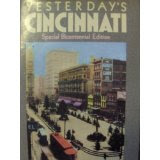
Eyewitness to Wounded Knee
"During this time a medicine man, gaudily dressed and fantastically painted, executed the maneuvers of the ghost dance, raising and throwing dust into the air. He exclaimed 'Ha! Ha!' as he did so, meaning he was about to do something terrible, and said, 'I have lived long enough,' meaning he would fight until he died. Turning to the young warriors who were squatted together, he said 'Do not fear, but let your hearts be strong. Many soldiers are about us and have many bullets, but I am assured their bullets cannot penetrate us. The prairie is large, and their bullets will fly over the prairies and will not come toward us. If they do come toward us, they will float away like dust in the air.' I turned to Major Whitside and said, 'That man is making mischief,' and repeated what he had said. Whitside replied, 'Go direct to Colonel Forsyth and tell him about it,' which I did. "
The "Ghost dance" religion
This was the recollection of Philip Wells, a mixed-blood Sioux Indian who served the U.S. Army as in interpreter of the events on the morning of this date, December 29, in 1890. It was on this date that a massacre of Sioux Indians occurred at Wounded Knee, South Dakota. The "ghost dance" to which Wells refers is a dance to a miraculous vision that an
Indian named Wakova had had. This man, a Paiute mystic had fallen into a trance during an eclipse of the sun that he saw while in Nevada (The "Ghost Dance" is pictured above). When he came out of his trance, he told others that he had been taken up into the world of the spirits. While amongst the spirits, he had received a revelation that a new day was dawning for the indigenous American peoples. He saw a world in which the Indians who had died would return, the vast herds of Buffalo would be restored, and the white oppressors would be vanquished. But this was strictly a religious faith of an afterlife. This new faith had certain tenets, which included behavior that was non-violent; there was to be no lying, no stealing, no cruelty. The dance would enable those who followed this faith to catch a brief glimpse of this paradise. It came to be called the "Ghost dance religion" by whites because it hinged on this belief in reuniting with dead spirits.
The Massacre at Wounded Knee
The Sioux added their own facet to this new faith: the wearing of brightly colored shirts which they said would be impervious to the white man's bullets. This sounded ominous to many of the white men who heard it, and this unease boiled over at Wounded Knee. The recent killing of Chief Sitting Bull had frightened some of the Chief's followers to take refuge in the camp of Big Foot, a Miniconjou Sioux Chief. When Big Foot and his followers were encamped at Wounded Knee Creek, they were surrounded by 470 troopers of the U.S. 7'th Cavalry who were armed with Hotchkiss Guns, a light rapid fire field cannon - a kind of precursor to the machine gun. At 8:00 that morning, the Sioux men came out and sat in a semi circle in front of their tipis. Colonel James Forsyth (pictured below), determined to disarm these men, sent
soldiers into their tipis to accomplish this. This tension quickly exploded into full fledged violence. One young Indian pulled out a gun and began firing. The Hotchkiss guns opened fire and swept the field, cutting down anything that moved. The few armed Indians tried to resist, but it was hopeless. In all, 25 white men were killed as opposed to over 180 Indians. This included the sick, such as Chief Big Foot who died as he attempted to rise from his sick bed, as well as women and children. The bodies of the dead, were left to lie until a blizzard subsided. On January 1, they were buried in a common grave, pictured at the top. This was the final "battle" between the indigenous American peoples and white men. The period of conflict was over, and peace - some would say the peace of the graveyard - settled in hereafter.
READERS!! If you would like to comment on this, or any "Today in History" posting, I would love to hear from you!! You can either sign up to be a member of this blog and post a comment in the space provided below, or you can simply e-mail me directly at: krustybassist@gmail.com I seem to be getting hits on this site all over the world, so please do write and let me know how you like what I'm writing (or not!)!
Sources =
http://www.eyewitnesstohistory.com/knee.htm
Time Life the OLD West Books 24 Volume SET (The Old West) By Time Life Books (Leather Bound - 1977)
The American Heritage Book of Indians
http://en.wikipedia.org/wiki/Wounded_Knee_Massacre
Pictures =
Top: http://en.wikipedia.org/wiki/File:Woundedknee1891.jpg
"Ghost Dance" : http://www.swoyersart.com/howard_terpning/ghost_dance.htm
Forsyth: http://sites.google.com/site/thewoundedkneemassacre/american-perspective
+ 433.
+ 201.












































